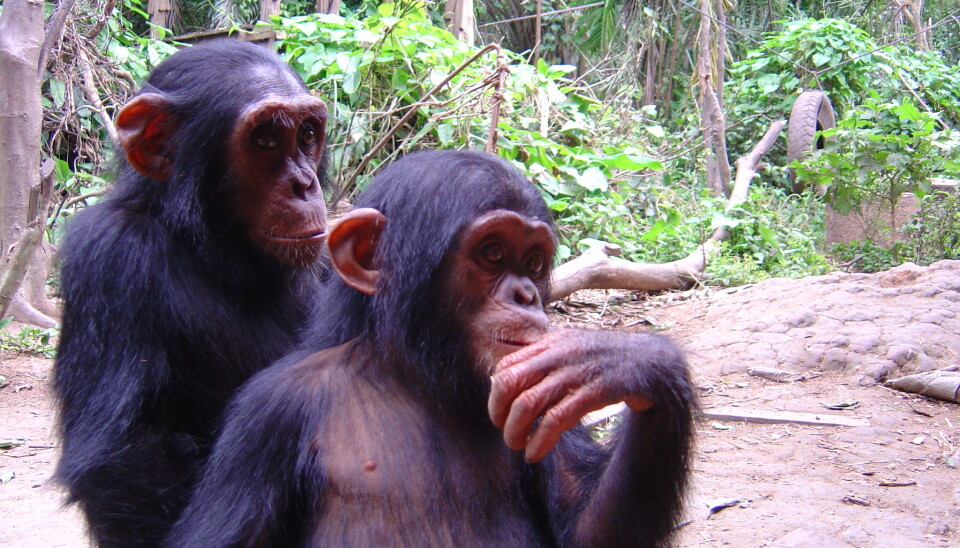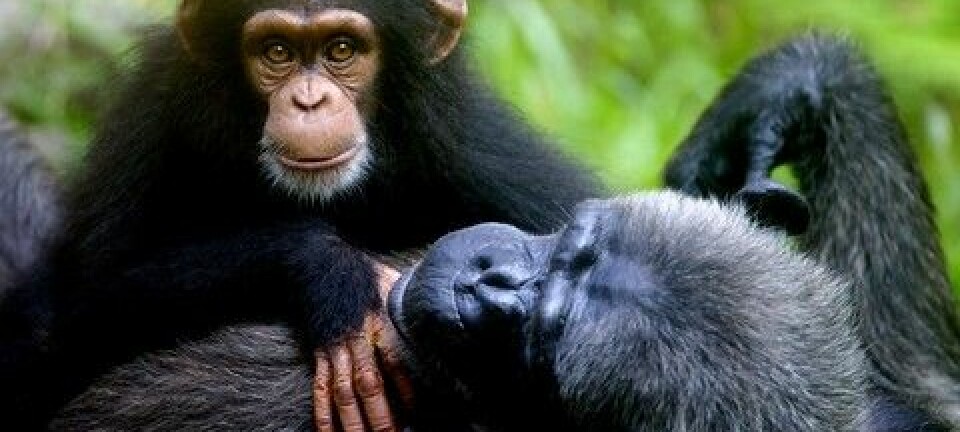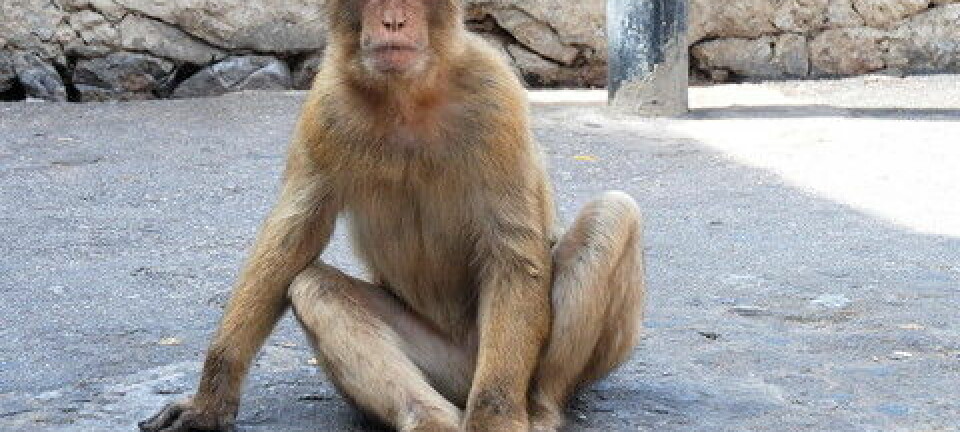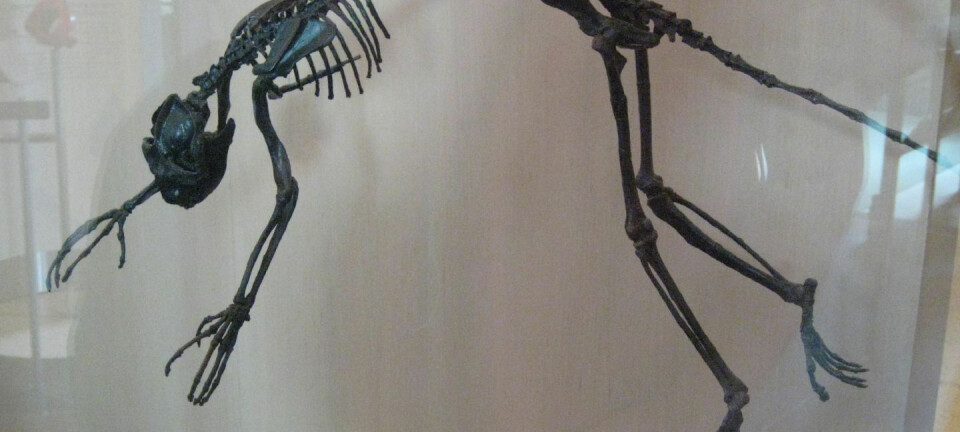
Three in four chimpanzee species live in European zoos
Danish researchers have found three out of the four existing subspecies of chimpanzees in the European zoo population. The chimpanzees can be used to consolidate existing breeding programmes and launch new ones.
The wild chimpanzees in Africa are threatened with extinction and a lot of work is being put in to save them.
One of the initiatives consists of conserving and developing the subspecies that reside outside of Africa, in case it should become necessary for them to return home. But this has turned out to be a challenge due to the lack of ancestry information about chimpanzees in zoos.
Four different chimpanzee subspecies in the wild
Zoologists know about four chimpanzee subspecies in Africa: one West African, one East African, one Central African and one subspecies from Nigeria and Cameroon.
The animals are very similar in appearance and can also breed with one another. Genetically, however, they are not identical.
It will be possible to maintain a natural diversity in the zoos, as a sort of external reservoir for the endangered subspecies.
In order to maintain sustainable populations, it is necessary to gather a sufficient number of individuals for each subspecies in captivity for breeding purposes. But up to now researchers have known very little about whether all these subspecies were also represented in zoos around the world.
Nature’s subspecies also live in zoos
But now they know a lot more, thanks to a comprehensive genetic study conducted by a team of Danish researchers at Copenhagen Zoo in close collaboration with Copenhagen University.
The study consisted of identifying which subspecies the chimpanzees in the European zoos belonged to.
”We can now confirm that at least three in four subspecies are represented in the population of chimpanzees in the European zoos,” says Christina Hvilsom, who headed the study as part of her PhD project at Copenhagen Zoo and Copenhagen University.
“That’s good news because it means that it will be possible to maintain a natural diversity in the zoos, as a sort of external reservoir for the endangered subspecies.”
The findings are published in the journal Heredity.
Basis for new breeding programmes
Hvilsom and her colleagues compared the genetic material from chimpanzees held in captivity with chimpanzees living in the wild. The genes were mapped based on blood samples sent to the researchers from nature reserves in Africa as well as from zoos across Europe.
The extensive mapping of the chimpanzees’ genes makes it possible to consolidate the existing breeding programmes in zoos and launch new ones.
Breeding programmes like these have been successful. One such programme has for instance managed to conserve the population of the West African chimpanzees.
The new study found many individuals of this particular subspecies, which will benefit the existing breeding programme in the future. The researchers also found 25 individuals from the Central African subspecies, which is more than enough to also start a specific breeding programme.
They did also find a small number of individuals from the East African subspecies, though not yet enough to be used for breeding purposes
Isn’t a chimpanzee just a chimpanzee?
At first glance, it may seem a bit strange with all this focus on subspecies, because isn’t a chimpanzee just a chimpanzee after all? But subspecies are actually uniquely adapted to survive in their particular habitat.
As chimpanzees have an immune defence that is capable of fighting certain diseases, they are e.g. vulnerable to viruses and bacteria that thrive in other parts of Africa.
Central Africa is plagued by the SIV virus, which is the chimpanzee equivalent of HIV. The Central African subspecies has adapted to this virus. West African chimpanzees, on the other hand, have not developed a defence against this virus and may thus be more prone to illness if they are infected with it.
“So you can’t simply take West African chimpanzees and release them in East Africa, as there is a great risk that they will lose out there. A West African chimpanzee will, all else being equal, have poorer chances of surviving if it were relocated to East Africa, compared to the East African subspecies, which has evolved and adapted in this region over thousands of years,” says Hvilsom.
But having found that three of the four naturally-occurring subspecies are represented in the European zoo population, the researchers can strengthen the existing breeding programme for the West African subspecies and launch a new breeding programme for the Central African subspecies.
“This will make it possible to conserve and develop these two subspecies for the time being.“
-----------------------
Read the Danish version of this article at videnskab.dk










